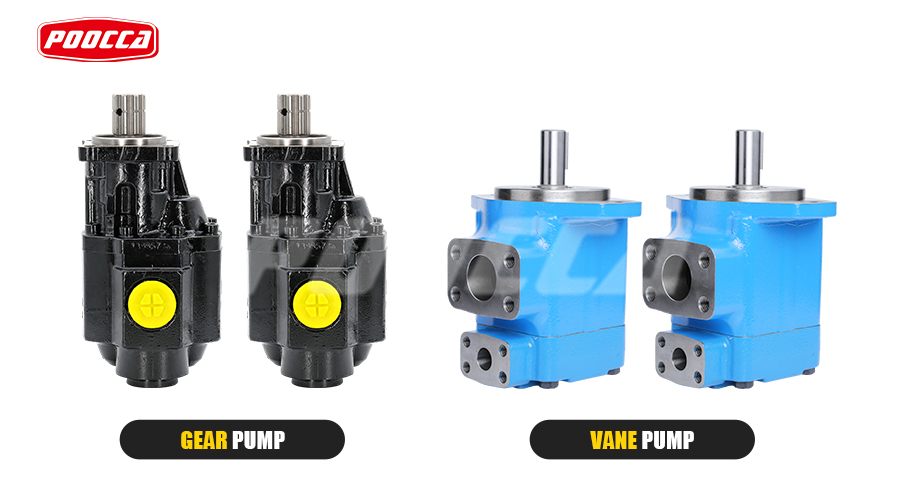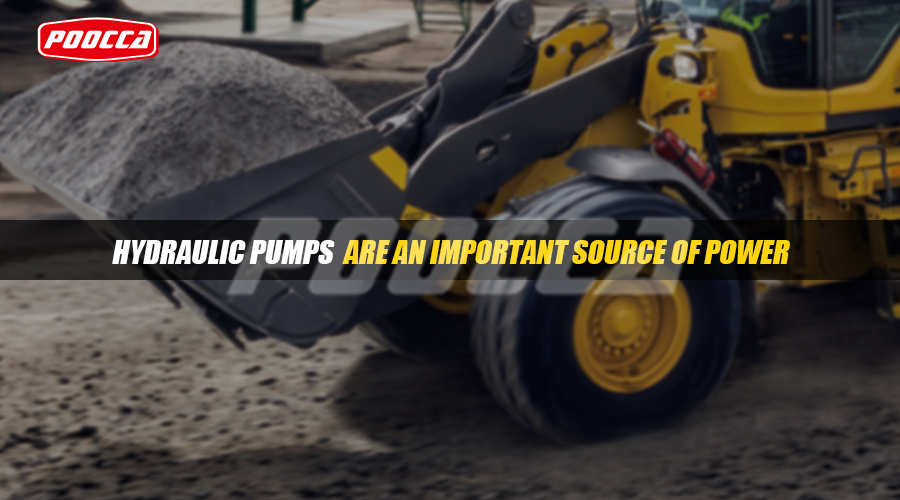In the hydraulic industry, vane pumps and gear pumps are two common hydraulic pumps. They are found in a wide variety of applications including industrial machinery, agricultural equipment, construction equipment, and more. However, although both types of pumps are important components of hydraulic systems, their working principles, performance and efficiency are different. This article will compare the efficiency of vane pumps and gear pumps.
**Efficiency comparison between vane pumps and gear pumps
**Evaluate the performance of vane and gear pumps
**Application suitability: vane and gear pumps selected based on specific needs
1. Efficiency comparison between vane pump and gear pump
Let’s take a look at vane pumps. The working principle of a vane pump is that liquid is sucked in and forced out through the contact between the rotor and the stator. One of the main advantages of vane pumps is their high efficiency. This is because vane pumps can operate at high pressure without losing too much energy. Vane pumps also have the advantages of low noise and long life. The disadvantage of the vane pump is that it requires high oil cleanliness. If the oil contains impurities, it may damage the vane pump.
Next, let’s look at gear pumps. The working principle of a gear pump is that liquid is sucked in and forced out through two gears that mesh with each other. One of the main advantages of gear pumps is their simple structure and low manufacturing cost. In addition, gear pumps also have the advantages of wear resistance and long service life. The disadvantage of gear pumps is that they are less efficient. This is because the gear pump loses a lot of energy when it works under high pressure. And the gear pump is also noisy.
So what is the efficiency of vane pumps and gear pumps? According to some experimental data, the efficiency of vane pumps is usually between 80% and 95%, while the efficiency of gear pumps is usually between 60% and 80%. This means that for the same operating conditions and loads, the energy loss of a vane pump is less than that of a gear pump. Therefore, from an efficiency perspective, a vane pump is a better choice.
But that doesn’t mean that vane pumps are the better choice in every situation. In fact, when choosing which type of pump to use, other factors need to be considered, such as cost, maintenance requirements, working environment, etc. For example, if the oil cleanliness in the working environment is high, or noise requirements are not high, then a gear pump may be a better choice.
It is also important to note that while vane pumps are generally more efficient than gear pumps, this does not mean that vane pumps are always able to deliver higher pressures or greater flows. In fact, the pressure and flow rate of a vane pump are limited by its design and manufacturing. When choosing a hydraulic pump, you also need to choose a suitable pump based on the actual work requirements.

2. Evaluate the performance of vane pumps and gear pumps
In the dynamic landscape of the hydraulics industry, vane and gear pump selection plays a role in determining overall system performance and efficiency.
Vane Pumps: Precision and Versatility
Vane pumps are known for their precision and versatility in a variety of hydraulic applications. These pumps use a series of vanes mounted on a rotor inside a chamber. As the rotor rotates, the vanes slide in and out, creating chambers that suck in and discharge hydraulic oil. One of the main advantages of vane pumps is their ability to maintain a relatively constant flow rate, making them suitable for applications requiring consistent and smooth hydraulic output.
In terms of operating efficiency, vane pumps excel in low pressure applications. Its design reduces noise levels during operation, resulting in a quieter working environment. In addition, vane pumps have excellent self-priming capabilities, ensuring reliable performance even when the pump is not completely filled with fluid.
However, it is worth noting that vane pumps may experience higher wear rates compared to gear pumps, especially at high pressures. This aspect requires regular maintenance and monitoring to maintain optimal performance over the life of the pump.
Gear pumps: a robust and cost-effective solution
Gear pumps, on the other hand, are valued for their robust design and cost-effective hydraulic system solutions. These pumps operate by using intermeshing gears to create a flow of hydraulic oil. Gear pumps are known for their simplicity and reliability and are often used in applications requiring continuous, stable flow.
The inherent design of gear pumps makes them ideally suited for high-pressure environments, providing a reliable solution for heavy-duty hydraulic systems. While gear pumps may produce more noise during operation compared to vane pumps, gear pumps compensate by providing durability and efficiency under challenging conditions.
One of the significant advantages of gear pumps is their cost-effectiveness. Their simple design makes them more economical to manufacture and maintain, making gear pumps an attractive choice for applications where budget considerations are paramount.
Choosing between a vane pump and a gear pump requires careful consideration of the specific requirements of the associated hydraulic system. Factors such as pressure levels, traffic requirements and budget constraints all play a key role in the decision-making process.
For applications requiring precision and consistent flow, vane pumps are an excellent choice. On the other hand, gear pumps become a reliable choice in heavy-duty scenarios where durability and cost-efficiency are critical.
3. Application suitability: select vane pumps and gear pumps based on specific needs
The main advantages of hydraulic vane pumps are their ability to deliver high pressure and efficiency. Vane pumps are designed to operate at high pressures without losing too much power. Additionally, vane pumps have lower noise levels, making them ideal for many applications. However, vane pumps also have some disadvantages. For example, they have high requirements for the cleanliness of the oil. If the oil contains impurities, it may damage the blades and reduce the efficiency of the pump.
Gear pumps are a type of pump suitable for low and medium pressure applications. Their main advantages are simple structure and low manufacturing cost. Gear pumps are designed to provide large flows at low pressures, so they are often used in applications requiring large volumes of fluid. In addition, gear pumps have a long service life because their gears do not come into direct contact with the liquid while working. However, gear pumps are generally less efficient than vane pumps, especially in high-pressure applications.
Ultimately, vane and gear pumps each have advantages and disadvantages, and which type of pump is chosen depends on the specific application needs. If the application requires high pressure and high efficiency, then a vane pump may be a better choice. If the application requires large volumes of fluid or operates at low pressure, a gear pump may be more suitable. No matter which type of pump you choose, you need to ensure proper maintenance and regular inspections to ensure optimal performance and longevity.
We have various hydraulic pumps. Send us your requirements immediately or recommend POOCCA hydraulic manufacturer to your friends who need to buy hydraulic pumps.
Post time: Dec-15-2023






